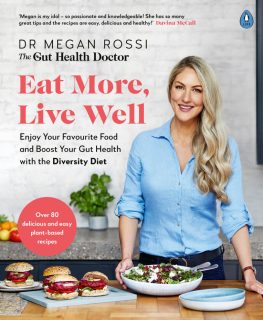Do you find that cake represents something much deeper to you than just a sweet indulgence? With cake at the centre of many celebrations throughout our lives – from birthdays and weddings to coffee dates with friends – it’s understandable if you associate cake with comfort and connection. But with many modern-day, ultra-processed cakes designed to enhance our sweet tooth and give us that dopamine hit (thanks to the combinations of added sugars, emulsifiers, texture enhancers, hydrogenated fats etc.) cake can pose a conundrum when it comes to diet choices and the quest to nurture your gut microbes and wider health goals.
How to have your cake and eat it too

Let them eat cake
A study by the University of Chester, published in the International Journal of Workplace Health, found that 87% of us are offered cake at work at least once a week, and 68% find it hard to resist. Firstly, as you know, we believe in INclusion and not EXclusion. This means we’re not about cutting any foods out. In fact, the research shows that doing so can turn them into a ‘forbidden fruit’ and lead to more cravings. Essentially, the more you try to suppress a craving, the harder it can be to resist, and the more likely you are to binge on it.
For instance, a study by the University of Canterbury, published in the journal Appetite, found that people who associated chocolate cake with guilt reported lower levels of behavioural control over their eating and were less successful at maintaining a healthy weight over an 18-month period, compared with those who associated chocolate cake with celebration. This aligns with the experience of the team at The Gut Health Clinic. Many clients who have spent their lives trying to resist their desire for certain foods, such as cake, often find that eventually, the floodgates always open. And when they do, they often find that they just can’t stop at one portion, leading to a damaging guilt-binge-restrictive cycle.
So can you have your cake AND feed your gut microbes too? The science shows that gut health is more impacted by the diverse and wholefood plants that you add INto your diet, than by EXcluding so-called ‘unhealthy’ or ‘bad’ foods. If you apply that ethos to cake then it means being aware of the gut health wins that you can make, either with smart switches when baking a cake at home or the things to look out for when on the go.
9 savvy cake-baking swaps
Let’s first look at home-baked cake. Instead of sticking with the same old flour, fat, sugar combo, the trick is to reduce the ratio of nutrient-poor ingredients and use more of those that give your gut microbes something to celebrate, without sacrificing taste or diminishing the joy of cake.
 1. Olive oil
1. Olive oil
A great substitute for butter (in a 1:1 ratio) in denser cakes for gut-loving benefits like in this mixed citrus olive oil cake.
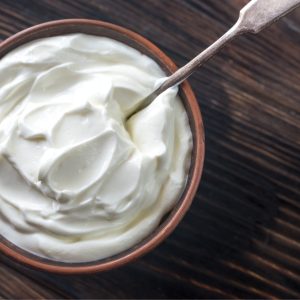 2. Greek yoghurt
2. Greek yoghurt
Thick, full-fat kefir (or standard) yoghurt can replace either half of butter or cream (in the case of cheesecake). Yoghurt not only adds protein but also other beneficial compounds that are produced when bacteria ferment milk to make yoghurt. This can also be a great replacement for icing. That protein hit will help slow the rate at which the sugar is absorbed and will make it more satisfying, meaning you’re less likely to feel the need for a second slice.
 3. Legumes
3. Legumes
As one of the Super Six, adding these to your desserts is a great way to get more diverse dietary fibres (and prebiotics) into your diet. These nourish your beneficial gut microbes, and in doing so allow the bacteria to produce chemicals known as short-chain fatty acids. These chemicals not only help to support a strong gut lining but have been shown to help regulate your appetite hormones too. Try replacing a third of the flour in brownies with cooked black beans (rinsed and drained tinned beans are a quick win) like in these fudgy walnut brownies or experiment with cannellini beans in this pistachio & strawberry-baked cheesecake.
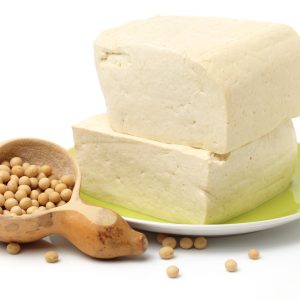 4. Silken tofu
4. Silken tofu
Another great replacement (available in most supermarkets) for half the oil or butter, which will add a filling hit of protein as well as hormone-supporting phytoestrogens, vitamins and minerals. Give it a try in your next chocolate cake or even your overnight oats!
 5. Medjool dates
5. Medjool dates
Swap half a cup of sugar for eight Medjool dates (blended with 1/3 cup of boiling water) — your gut microbes will feast on the fibre, like in these bounty bar bites and your tastebuds will still get that sweet hit they love.
 6. Bananas
6. Bananas
Use three ripe bananas in place of half a cup of sugar and half a cup of oil or butter, like in these nutty flapjacks — bananas are another favourite with gut microbes and also provide fibre and potassium (to help regulate your blood pressure).
 7. Ground flour or wholemeal flour
7. Ground flour or wholemeal flour
Use ground almonds instead of flour, or try half flour with half almonds, like with these banoffee millionaire’s shortbread. This adds fibre, which is a particularly good option for those with diabetes, as it lowers the blood sugar peak when compared to white flour. Or, if you don’t fancy ground almonds, use wholemeal flour as a more nutritious alternative to plain.
 8. Oats
8. Oats
Replace a third of the flour with oats to increase the cholesterol-lowering beta-glucans, like with this super seedy & nutty loaf. For other cholesterol-lowering tips check out this blog.
 9. Grated carrot or courgette
9. Grated carrot or courgette
Bulk up the recipe with a cup of grated veg such as carrot (check out these chocolate-covered stuffed figs) or courgette (like with these chocolate & coconut brownies), which adds sweetness and moisture as well as fibre, polyphenols and a wide range of micronutrients.
3 tips when choosing cake on the go
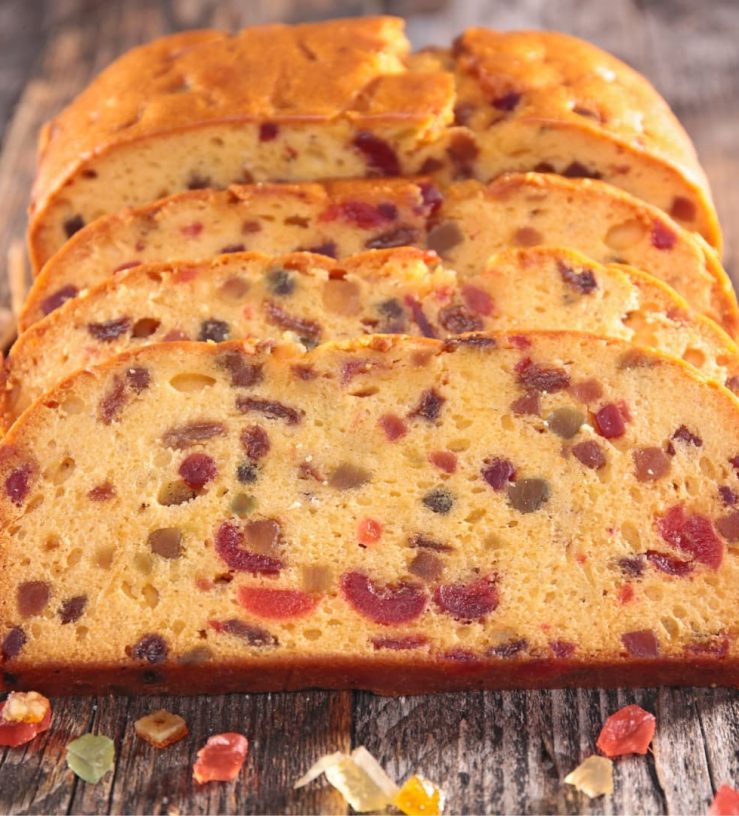
Think fibre — fruit cake is often a better bet than carrot cake, for example. Fruit cake tends to provide much more fibre, whereas carrot cake comes with a thick wad of overly rich icing and little actual carrot (unless it’s homemade in which you can up the number of carrots and walnuts). Look for the inclusion of dietary fibres to make it a gut-loving choice.
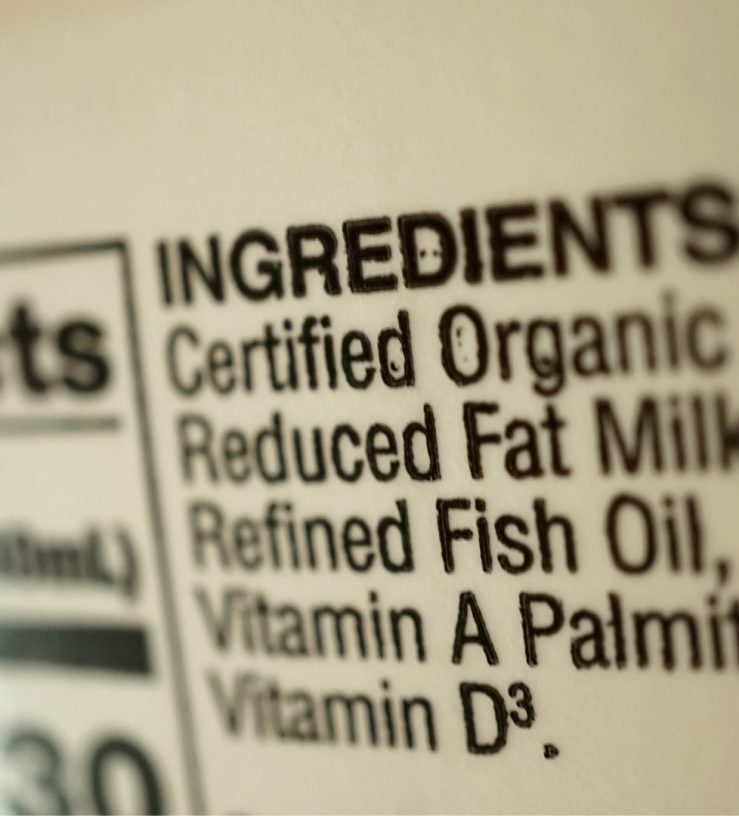
Scan the ingredients and choose those with more wholesome-sounding contents — wholemeal flour, oats, dates and cinnamon. Avoid those with lists that sound like the contents of a chemistry lab or that come in lurid colours, as this may mean your cake is more likely to come with potential gut microbe-disrupting additives, such as artificial sweeteners and certain types of emulsifiers.
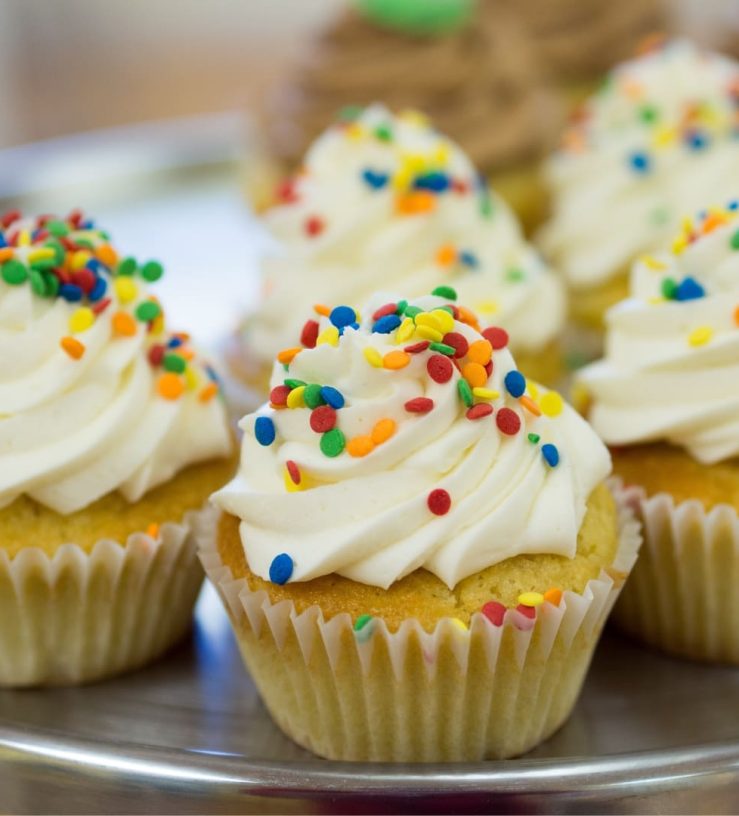
Opt for plain cake over iced. Icing is usually pure sugar and butter or cream and, weight for weight, tends to contain more saturated fat and added sugar than the cake itself. In fact, the icing can contain double the calories of the cake, and one tablespoon can provide more than three teaspoons of sugar (that’s half of the top end of the daily recommended amount). While we certainly don’t recommend fixating on calories, because it’s not as black and white as you may have been led to believe, in this context it’s worth being aware. So if you’re served a slice with an overwhelming supply of icing, don’t feel obliged to eat it all.

Takeaway
The most commonly craved foods tend to be more processed foods like cookies and cake, which, while they’re absolutely no bad things in moderation, are calorie-rich and nutrient-poor. The challenge is that if you’re filling up on these foods, you’re unlikely to be getting enough of the high-fibre, plant-based goodness that your gut microbes love. This could risk ‘starving’ your gut microbes and influencing their diversity and ability to work at their best for you.
Remember, you don’t have to completely eliminate certain foods you love from your diet — doing so might even increase your cravings for them and make cravings worse in the long run. And although enjoying cake every day may not be a great idea, there are lots of ways to incorporate it into your diet with some gut health wins. To support you, all the desserts you can find in The Gut Health Doctor free recipe hub are full of nourishing ingredients and packed full of plants. Enjoy! And remember to tag any creations you post on social media @theguthealthdoctor, we love seeing them brought to life.

Take this bloating quiz to test your knowledge
Are you savvy when it comes to bloating management or have you fallen prey to myths and misconceptions?

